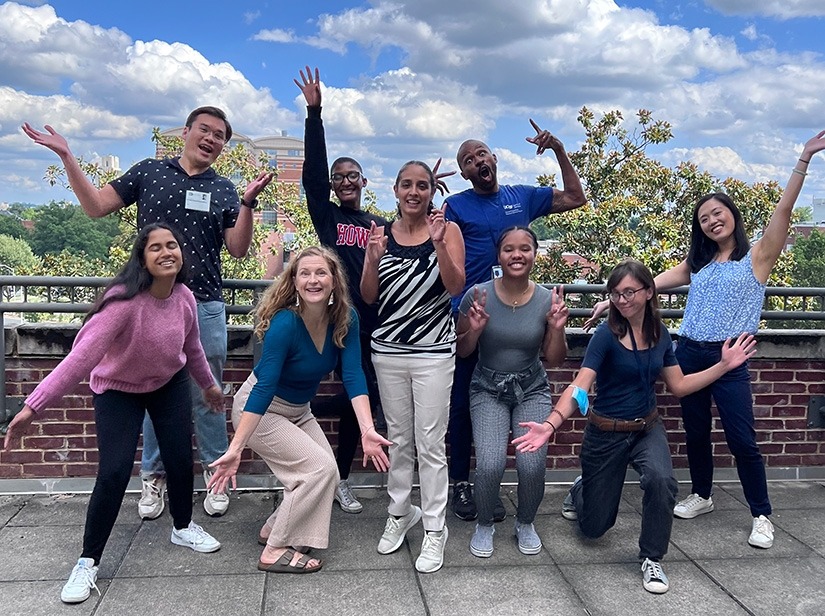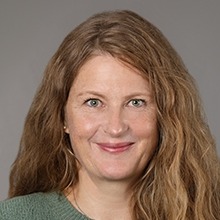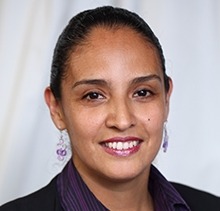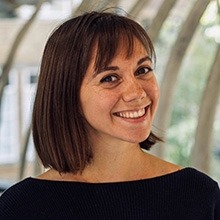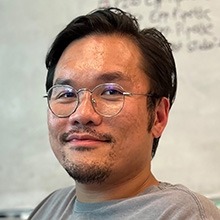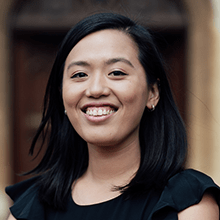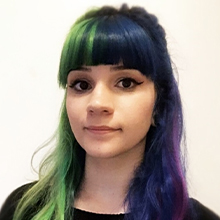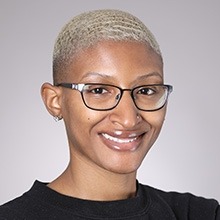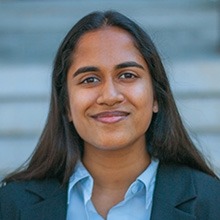Laura Kerosuo – Principal Investigator
I received my Ph.D. in stem cell biology from the Faculty of Medicine at The University of Helsinki, Finland. My graduate work focused on characterization of regulatory functions in mouse neural stem cells. I then continued as a postdoctoral fellow at the California Institute of Technology where I initiated my research on stem cell characteristics of the neural crest by adopting the early chicken embryo as my model system. My postdoctoral (postdoc) work in Professor Marianne Bronner’s laboratory demonstrated that neural crest cells, despite their transient nature, maintain a premigratory stem cell niche of self-renewing and pluripotent cells located in the dorsal neural tube. I made this discovery by creating novel techniques such as developing crestospheres, an in vitro method to maintain neural crest stem cells in a self-renewing state. Furthermore, I had the opportunity to be a part of a collaboration with biophysicists, which led to the development of a single-molecule fluorescent in situ hybridization (smFISH)-based Multiplex Spatial Transcriptome Analysis (scMST) that revealed a pluripotent-like neural crest stem cell domain in the dorsal neural tube. Based on these findings, I established my lab, the Neural Crest Development and Disease Unit at NIDCR in July 2018 where we have continued to pursue research focusing on the molecular mechanisms of neural crest stemness maintenance in normal development and in neurocristopathies.
Laura’s quote: "If only could I spend a day swimming in a neural crest cell to see how it all actually works."
Karla Barbosa-Sabanero – Postdoctoral Fellow
My research interest is focused on the mechanisms by which cell de-differentiation and cell identity are regulated.
During my Ph.D. and as a postdoctoral fellow at the National Eye Institute, I developed a strong interest in regenerative medicine studying the signals and mechanisms that control cell identity.
Currently, at Dr. Kerosuo’s lab I am interested in the mechanisms that maintain the pluripotent state and the cell identity of the neural crest cells, and how these mechanisms could contribute to regenerative therapies and disease. Precise understanding of the mechanisms that induce and maintain the pluripotency of the stem cell niche in neural crest cells is fundamental to model neural crest defects to develop regenerative therapeutic strategies.
Karla’s quote: "Thrilled to unravel the secrets of cell identity and pluripotency of the neural crest cells every day in the lab."
Jenaid Rees – Postdoctoral Fellow
I have long loved developmental biology, specializing in this subject during my undergraduate degree at the University of Manchester. I went on to study chick embryology in the Stern lab at University College London for my masters and earned a Ph.D. in developmental mechanisms from the University of Cambridge, Department of Zoology under Andrew Gillis. During my Ph.D. I specialized in craniofacial research looking at the role of signaling centers for instructing pharyngeal arch development in chicken and skate. As a postdoc in the Kerosuo lab, I hope to expand my neural crest and craniofacial research portfolio with a project exploring gene expression signatures that occur across the dorsal and ventral neural tube of the chick to better understand the specific function of genes known to be necessary for neural crest cell specification and survival.
Jenaid's quote: “Neural crest cells are fascinating to study―their diverse contribution to the vertebrate body plan puts them, in my opinion, ‘head and shoulders’ above other cell types.”
Ed Taroc – Postdoctoral Fellow
My broad research interest lies in the mysteries of how a stem-cell has the potential to become nearly any cell in the body. It is this interest that led me to become very interested in developmental biology and pursue this interest through my Ph.D. graduate work at The University at Albany, SUNY, where I studied the development and migration of neurons and glia from the embryonic nose to the brain in Dr. Paolo Forni’s lab.
As a postdoctoral fellow in the Kerosuo lab since September 2023, my work is focusing on understanding how DiGeorge syndrome, a disease caused by a small deletion in chromosome 22, affects the development of the neural crest. Interestingly, even though DiGeorge syndrome has phenotypes shared with neurocristopathies, not much work has been done to elucidate how this deletion affects the neural crest and its differentiation capacity to different derivatives. My project focuses at analyzing gene expression profiles to understand what genes and gene regulatory pathways are affected in DiGeorge syndrome. I’m very excited to have started this journey to uncover cool new things about the neural crest!
Ed's quote: “Take inspiration from the neural crest, go travel and find who you’re supposed to be. Don’t forget to have fun on the way!”
Shaun Abrams – Independent Research Scholar
My goal is to become a leading clinician-scientist in the field of craniofacial development and craniofacial anomalies studying the genetic and molecular basis for craniofacial defects to develop innovative therapeutic strategies. I completed the D.D.S./Ph.D. program at the University of California, San Francisco in 2020, graduating with honors and inducted into the Omicron Kappa Upsilon National Dental Honor Society. My Ph.D. work in the lab of Dr. Jeremy Reiter uncovered how primary cilia regulate development of the facial midline. I returned to NIDCR as a Dental Clinical Research Fellow in 2021 to build upon my love for developmental biology sparked during my time as a postbaccalaureate IRTA in the lab of Dr. Matthew Hoffman. I am currently an Independent Research Scholar at NIDCR, and my team works jointly with the Kerosuo and Werner labs studying how the ubiquitin pathway regulates neural crest development and how centrioles/cilia coordinate craniofacial development.
Shaun’s quote: "I am thrilled to embark on an adventure unlocking new insights into neural crest development. I am especially excited to study a stem cell population giving rise to cell types as diverse as the intersectional identities I bring to the lab and NIH/NIDCR."
Jenny Hsin – M.D./Ph.D. Student
I am an M.D./Ph.D. student currently in the Ph.D. phase of my training and doing research jointly in the Kerosuo lab at NIDCR and the Huang lab at the University of Cambridge through the NIH OxCam Scholars Program. My studies focus on understanding neural crest stem cell regulation and a potential initiation mechanism for neuroblastoma using a human embryonic stem cell organoid model in the Kerosuo lab, which I hope to adapt to a tumoroid model of neuroblastoma using 3D bioengineering techniques in the Huang lab. In the future, my goal is to build a career as a physician-scientist in biomedicine by unraveling novel molecular mechanisms to be utilized in development of regenerative or cancer therapies.
I graduated in 2018 with a Bachelor of Science in biology from the California Institute of Technology and first joined the Kerosuo lab as a postbac from 2018–2020. I then completed the first half of my M.D. training through the University of Alabama at Birmingham Medical Scientist Training Program from 2020–2022 and will finish my M.D. training after completion of the Ph.D.
Jenny’s quote: "I have a neural crest joke, but it hasn’t differentiated yet."
Ceren Pajanoja – Ph.D. Graduate Student
I obtained my bachelor’s degree in biology at the University of Istanbul, Turkey. I then continued my studies at the University of Helsinki, Finland, and graduated with a master’s degree in neuroscience in 2016. The aim of my Ph.D. project in the Kerosuo lab is to understand cell-to-cell heterogeneity within the neural crest stem cell niche. How do neural crest cells regulate their stemness at different axial levels from ‘head to toe’? Do neural crest stem cells already reflect their future fates? In order to answer these questions, my project uses Spatial Genomic Analysis , a novel smFISH-based imaging technique, that analyses expression of tens of genes with single cell resolution in complex tissues without compromising the cellular architecture. Multiplexing is based on serial hybridization rounds, and a machine learning algorithm-based cell segmentation together with dot counting of individual RNA transcripts guarantees high accuracy of this quantitative method. I enjoy my project that combines wet lab, high resolution imaging, and a good amount of computational science.
Ceren’s quote: "My passion is to reveal secrets of neural crest heterogeneity one line of code at a time."
Jamiya Kirkland – NIH Postbaccalaureate Intramural Research Traineeship Award (IRTA) Fellow
I am a 2021 summa cum laude graduate of Howard University with a B.S. in biology. During my undergraduate studies, I worked under Dr. Yayin Fang, Ph.D., for four years completing a molecular docking study for anticonvulsant enaminones, designed to control epileptic seizures by targeting voltage-gated sodium channels using the Molecular Operating Environment (MOE). As a recipient of the NIDCR Director’s Postbaccalaureate Fellowship to Enhance Diversity in Dental, Oral, and Craniofacial Research, I joined the Kerosuo lab in September 2022. Since my time in Dr. Kerosuo’s lab I have not only expanded my knowledge in computational biology and coding to understand molecular mechanisms of neural crest development but have also gained valuable wet lab experience. My understanding of the neural crest and its role in development has grown tremendously. I am learning how to perform in situ hybridization studies and cryosectioning using the chicken model to examine gene expression. I am also learning to grow cell lines, produce spheroids and perform immunostaining studies to examine gene expression of neural crest markers in neuroblastoma cells; as well as learning imaging techniques using two different confocal microscopes. I am excited to continue my work at NIDCR and prepare myself for the next step in my career―medical school admission.
Jamiya's quote: “I am hopeful that the field of medicine and research will continue growing to be as diverse as the neural crest, if not more.”
Sravya Pailla – NIH Postbac IRTA Fellow
I completed a Master of Science in physiology and biophysics at Georgetown University in June 2022, where I took several medical courses and contributed to a group literature review on the current treatment landscape and potential uses of CRISPR-Cas9 for Fragile X Syndrome. I studied cell biology and neuroscience at Rutgers University-New Brunswick for my undergraduate education. In graduate school, I found the embryology and pharmacology courses particularly fascinating, and I am excited to delve more into neural crest development here. The neural crest was mentioned in different contexts in my coursework and was compared to “marvelous pixie dust.” I joined the Kerosuo lab in September 2022, and I’m looking forward to learning more about neural crest cell expression patterns and applications to neurocristopathies here. I’m currently working on a project with Karla that aims to understand the mechanisms that drive pluripotency-like stem cell capacity in the human neural crest.
Sravya’s quote: “Looking forward to embracing the unknown that is the sprinkling of neural crest cells in the body, a process contributing to a vast array of formations, and hoping to be changed myself as I study the neural crest’s transformative potential.”
Lab Alumni
- Dr. Tunde Berecz – Stem Cell Scientist, CellVoyant, UK
- Hannah Geller – Ph.D. graduate student, University of Pennsylvania
- Bradley Olinger – Ph.D. graduate student, Johns Hopkins University and the National Institute of Aging, NIH
- Dr. Surangi Perera – Senior Scientist, Tome Biosciences, USA
- Dr. Zarin Zainul – Senior Scientist at Recursion Pharmaceuticals, Utah
- Rita Yazejian – Ph.D. graduate student at Albert Einstein College of Medicine
- Heli Takko – Ph.D. gradate student at the University of Helsinki
- Camilo Echeverria – Ph.D. graduate student at University of California, Davis
- Dr. Andrew Schiffmacher – Assistant Professor, Department of Animal and Avian Sciences, University of Maryland


